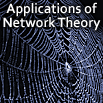Speaker
Dr
Veronica Ramenzoni
(Max Planck Institute for Psycholinguistics)
Description
During joint tasks, when two or more people interact to
accomplish a shared goal, actors coordinate their cognitive
processes along with their motor outputs online in order to
achieve a shared goal. Spatial-temporal coordination of
behavior (e.g., eye movements, postural sway, or limb
movements) depends to a large extent on the perceptual-motor
systems ability to adapt to changing constraints while
supporting joint actions. Soft-assembly of synergies across
individuals (interpersonal) and within each individual
(intrapersonal) is a common strategy for coping with changes
in constraints that can span scales. Synergies at the
intrapersonal and interpersonal scales are not independent
from one another, but establish rather a system of nested
relations in which adjustments in the synergies at the
intrapersonal level help support and maintain coordination
at the interpersonal level. In spite of the plethora of
studies on the emergence and soft assembly of coordinative
structures, evidence so far has mainly pointed at how
changes in external and internal constraints impact them
globally (i.e., changes in overall stability). This talk
will introduce the problems of how to better identify and
characterize coordinative structures, the changes local
relations within structures undergo in response to
constraints, and how they impact the efficiency of
coordinative relations globally. The advantages and
limitations of well-established and newer methodologies for
confronting the problem will be discussed. The goal of the
talk is to promote discussion on the potential contribution
of computational network theory to the study of social
coordination.

